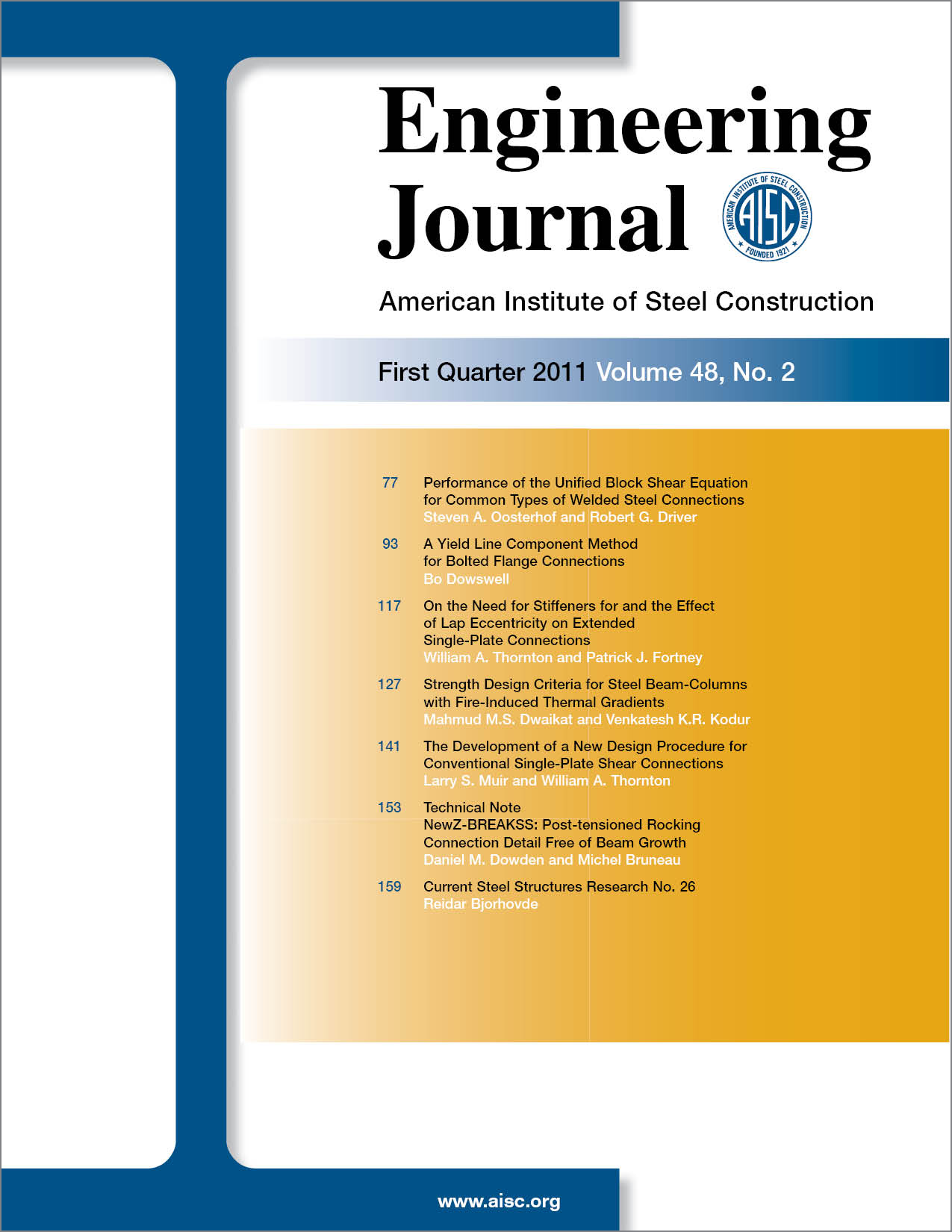Strength Design Criteria for Steel Beam-Columns with Fire-Induced Thermal Gradients
DOI:
https://doi.org/10.62913/engj.v48i2.1007Keywords:
beam-columns, elevated temperatures, fire, interaction equationsAbstract
When exposed to fire, restrained steel members develop significant internal forces, and these forces transform their behavior from beams or columns to that of beam-columns. The current provisions for fire-resistance assessment of such beam-columns through P-M interaction equations are an extension to the ambient interaction equations. These fire design equations take into consideration the reduction in the capacity arising from temperature-induced degradation of strength and stiffness properties but do not take into account the effect of other critical factors, such as thermal gradient, end restraints and realistic fire scenarios (with cooling phase). In this study, the different fire design equations for steel beam-columns are compared against results from nonlinear finite element simulations. Results from the analysis show that fire-induced thermal gradient leads to not only a reduction in the P-M diagrams, but also a noticeable distortion in the shape of the P-M diagrams. Therefore, modifications are proposed to the current design interaction equations for steel beam-columns at elevated temperatures. The modified P-M design equations are validated against results from fire tests and from finite element analysis and then illustrated through a design example. The proposed approach requires minimum computational effort and provides better assessment of beam-columns under fire when compared to current provisions

